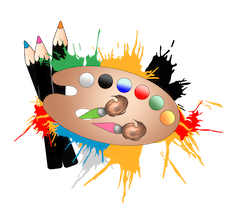Pollination: A Vital Process for Life on Earth
Pollination is the transfer of pollen from the male part of a flower (anther) to the female part of a flower (stigma) of the same or a different plant. This process allows the plant to produce seeds and fruits, which are essential for its reproduction and survival. Pollination also ensures genetic diversity and variation among plants, which helps them adapt to changing environmental conditions and resist diseases and pests.
Pollination is mostly done by animals, such as insects, birds, bats, and mammals, that visit flowers for food, shelter, or mating. These animals are called pollinators, and they play a crucial role in the functioning of natural ecosystems and human food systems. According to the Food and Agriculture Organisation (FAO), more than 75% of the world's crop plants and 35% of global crop production depend on animal pollination[^1^][1]. Some of the crops that rely on pollinators are almonds, apples, blueberries, coffee, cocoa, melons, tomatoes, and many more. Pollinators also contribute to the production of other products, such as honey, wax, silk, and medicines.
Pollination is not only important for food security, but also for biodiversity conservation, ecosystem services, and human well-being. Pollinators support the growth and reproduction of many wild plants, which provide habitat, food, and other resources for other animals and humans. Pollinators also help to maintain the balance and stability of ecosystems, by regulating plant populations, preventing soil erosion, enhancing water quality, and mitigating climate change. Pollinators also have cultural and aesthetic value, as they inspire art, literature, religion, and education.
However, pollinators are facing many threats, such as habitat loss and fragmentation, climate change, invasive species, pesticides, diseases, and parasites. These threats have caused a decline in the abundance and diversity of pollinators worldwide, which poses a serious risk to the sustainability of natural and agricultural systems. According to a report by the Intergovernmental Science-Policy Platform on Biodiversity and Ecosystem Services (IPBES), pollinators are responsible for the production of up to $577 billion worth of crops annually, but more than 40% of the invertebrate pollinator species and 16% of the vertebrate pollinator species are threatened with extinction[^2^][2].
Therefore, it is imperative to protect and conserve pollinators and their habitats, as they are vital for life on earth. There are many actions that can be taken to achieve this goal, such as:
- Promoting the use of native and diverse plants in gardens, farms, and landscapes, to provide food and shelter for pollinators throughout the year.
- Reducing the use of pesticides and other chemicals that harm pollinators, and applying them only when necessary and in a targeted manner.
- Creating and restoring natural habitats and corridors for pollinators, such as forests, grasslands, wetlands, and urban green spaces.
- Supporting the management and conservation of wild and domesticated pollinators, such as bees, butterflies, and hummingbirds, by providing them with nesting sites, water sources, and disease control.
- Raising awareness and education about the importance and benefits of pollination and pollinators, and encouraging the participation and collaboration of different stakeholders, such as farmers, consumers, policymakers, researchers, and educators.
Pollination is a vital process for life on earth, and pollinators are the key actors that make it possible. By protecting and conserving pollinators and their habitats, we can ensure the survival and prosperity of ourselves and future generations.
Care about pollinators
Pollinators are essential for the survival of many plants and animals, including humans. Here are some simple ways you can help protect pollinators in your area:
- Plant native and diverse flowers, shrubs, and trees that provide nectar and pollen for pollinators throughout the year. You can find regional planting guides by entering your zip code here.
- Avoid using pesticides and other chemicals that harm pollinators and their habitats. If you need to use them, apply them only when necessary and in a targeted manner, and follow the label instructions carefully.
- Create and maintain natural habitats and corridors for pollinators, such as forests, grasslands, wetlands, and urban green spaces. You can also provide nesting sites, water sources, and disease control for pollinators, such as bee houses, bird baths, and beneficial insects.
- Learn more about the importance and benefits of pollination and pollinators, and share your knowledge and passion with others. You can join or support organisations that work to protect and conserve pollinators, such as The Wildlife Trusts or The National Environmental Education Foundation.
By following these steps, you can make a positive difference for pollinators and the environment. Thank you for your interest and action. 🐝🌼🌎

.jpg%20:CA:B17%20.jpg)



